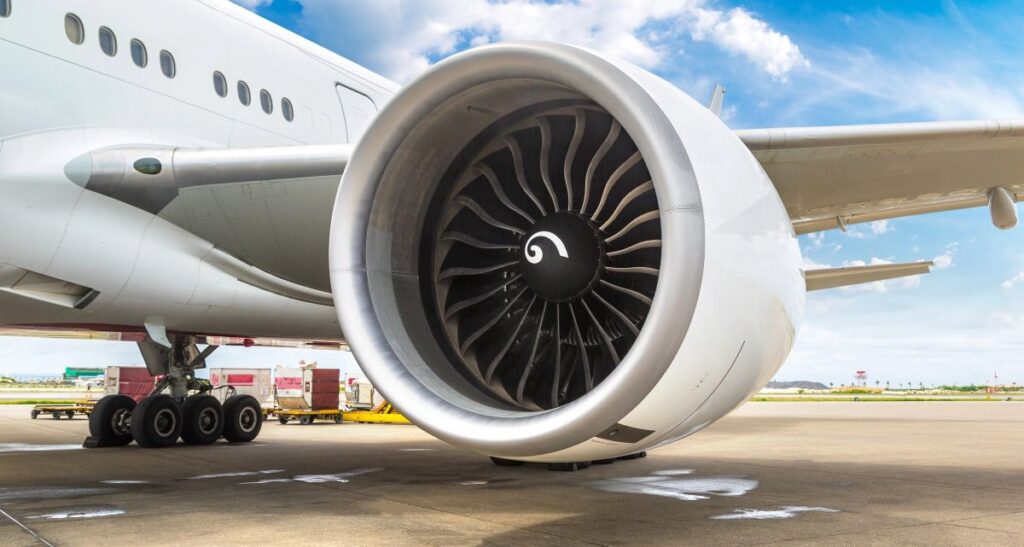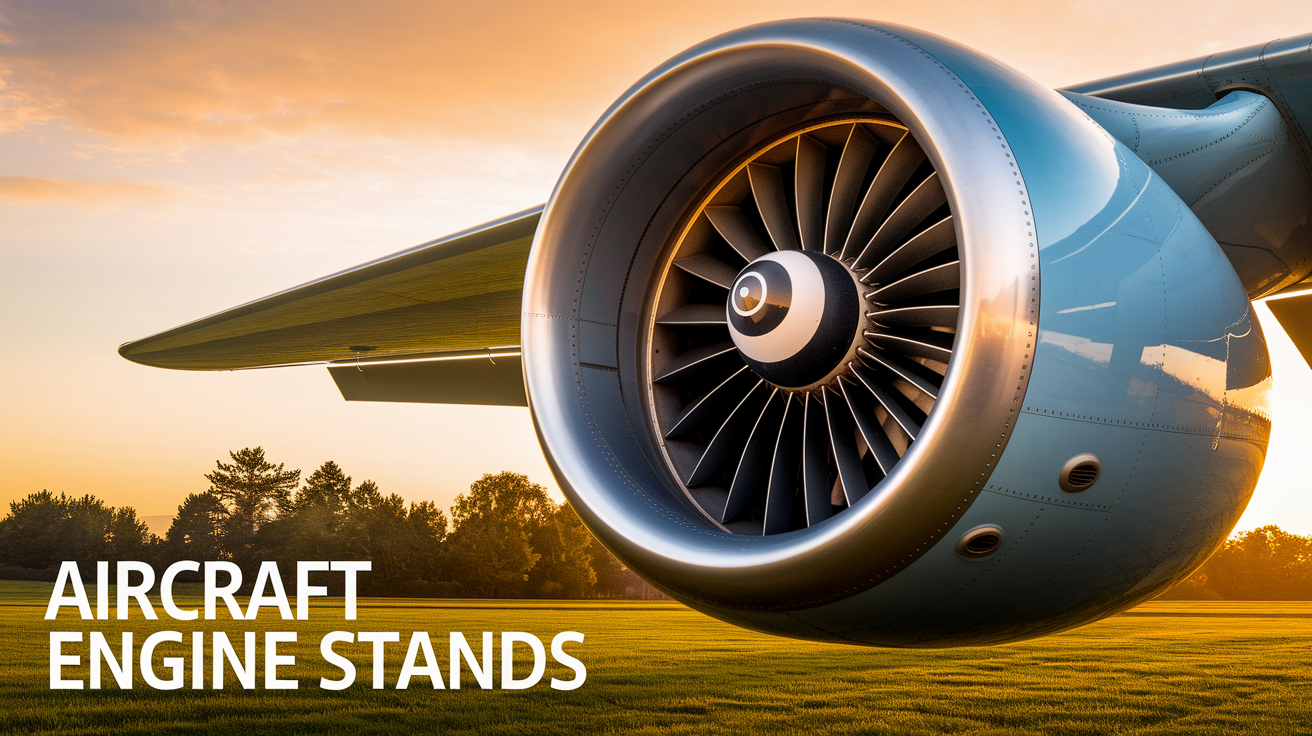In today’s high-stakes aviation maintenance world, Aircraft Engine Stands represent critical equipment that can make or break hangar efficiency. These specialized tools provide the foundation for safe engine handling during maintenance, repair, and overhaul operations while directly impacting workflow productivity and safety protocols. Maintenance facilities looking to maximize operational efficiency must carefully select stands that balance durability, functionality, and specific engine compatibility. For operations requiring temporary solutions, airplane engine stand rent services offer flexible options without the capital investment, with specialized models like the CFM56-7B available at https://stands.aero/product/cfm56-7b/ for immediate deployment.
Understanding Aircraft Engine Stands
Aircraft Engine Stands serve as specialized equipment designed to securely hold and support aircraft engines during transportation, maintenance, installation, and removal processes. These robust structures provide stability while allowing technicians to access all engine areas safely and efficiently. Modern stands incorporate features that protect these multi-million-dollar powerplants from damage while facilitating their movement throughout maintenance facilities with minimal risk.
Primary Functions in Aviation Maintenance
Engine stands deliver several essential functions in aviation maintenance:
- Providing stable platforms for engine inspections and repairs
- Enabling safe transport between maintenance stations
- Facilitating proper engine positioning for optimal technician access
- Protecting engines from handling damage during maintenance cycles
- Supporting proper storage conditions when engines are not installed
Top 5 Engine Stands for Maximum Hangar Efficiency
The market offers numerous stand options, but these five models from National Aero Stands represent excellent choices for maintenance facilities seeking to optimize their operations.
Trent 800 Rollover Stand
The Trent 800 Rollover stand delivers exceptional versatility for Rolls-Royce Trent 800 engines, making it a preferred choice for wide-body aircraft maintenance facilities. This specialized stand combines robust construction with rollover capability that addresses common handling challenges for these powerful engines.
Key advantages include:
- Rollover functionality for complete engine access
- Robust construction suitable for heavy-duty applications
- Optimized access points for maintenance procedures
- Durable caster system with reliable braking mechanisms
- Compatibility with standard handling equipment
CFM56-7B Engine Stand
The CFM56-7B stand provides essential support for one of the most common engine types in commercial aviation. This purpose-built stand enables efficient maintenance of engines powering the Boeing 737NG fleet, with features specifically designed for this engine family.
The CFM56-7B stand excels through:
- Purpose-built design for perfect engine fitment
- Optimized weight distribution for stable handling
- Enhanced mobility features for hangar operations
- Corrosion-resistant materials for extended service life
- Integrated safety features preventing accidental movement
Trent 7000 Engine Stand
The Trent 7000, powering the Airbus A330neo, requires specialized handling equipment due to its size and complexity. This stand provides the necessary support while ensuring technician safety and efficient maintenance access.
Notable features include:
- Heavy-duty construction supporting this large engine
- Precision mounting interfaces for secure attachment
- Enhanced stability during maintenance procedures
- Mobility systems designed for controlled movement
- Access optimization for critical maintenance zones
PW1100 Engine Stand
The PW1100 stand supports the Pratt & Whitney geared turbofan engines used on the Airbus A320neo family. This next-generation engine requires advanced handling solutions that this stand delivers effectively.
Stand benefits include:
- Compatibility with the latest engine technology
- Streamlined design for efficient facility movement
- Reinforced structure supporting critical handling points
- Adaptable configurations for varied maintenance needs
- Enhanced safety features protecting valuable assets
V2500-A1/5 Engine Stand
The V2500 engine family continues to power a significant portion of the A320 fleet, making this stand essential for many maintenance operations. This purpose-built solution addresses the specific handling requirements of this engine type.
Key advantages include:
- Specific design for IAE V2500 engine series
- Optimized maintenance access to critical components
- Durable construction for long-term reliability
- Efficient mobility features for hangar operations
- Proven track record in maintenance facilities

Comparing Stand Features for Operational Excellence
When evaluating stands for your facility, comparing their key specifications provides critical insights for decision-making. Each stand offers different advantages aligned with specific operational needs.
| Stand Model | Compatible Engines | Best Application | Key Features |
|---|---|---|---|
| Trent 800 Rollover | Rolls-Royce Trent 800 | Wide-body maintenance | Rollover capability, Heavy-duty construction |
| CFM56-7B | CFM56-7B Series | 737NG fleet support | Purpose-built design, Enhanced mobility |
| Trent 7000 | Rolls-Royce Trent 7000 | A330neo support | Heavy-duty construction, Precision interfaces |
| PW1100 | Pratt & Whitney PW1100G | A320neo maintenance | Next-gen compatibility, Reinforced structure |
| V2500-A1/5 | IAE V2500 Series | A320 family support | Purpose-built design, Optimized access |
Key Selection Criteria for Maintenance Facilities
Choosing the optimal Aircraft Engine Stands requires evaluating several critical factors beyond basic functionality. Maintenance facilities must consider operational requirements, future fleet changes, and total ownership costs.
Safety Features and Certification Standards
Safety represents the paramount concern when selecting engine stands. These systems must maintain absolute stability while supporting components worth millions of dollars.
Critical safety considerations include:
- OEM certification ensuring compatibility with specific engine models
- Load testing certification verifying weight capacity claims
- Locking mechanisms preventing unintended movement during maintenance
- Stability design preventing tipping or shifting under load
- Regular inspection and maintenance procedures
Space Utilization and Mobility Features
Modern maintenance facilities must maximize every square foot while maintaining workflow efficiency. Stand design significantly impacts how space is utilized and how effectively engines can be moved between work stations.
Space and mobility advantages to evaluate:
- Compact storage configurations when not in use
- Smooth-rolling caster systems for single-technician movement
- Turning radius appropriate for facility layout constraints
- Braking systems that secure stands in precise positions
- Compatibility with facility doorways and lifts
Enhancing Maintenance Workflow Efficiency
Beyond basic engine support, premium Aircraft Engine Stands directly contribute to workflow optimization. Smart design features facilitate faster maintenance procedures, reduce technician fatigue, and minimize the risk of damage events.
Reducing Maintenance Time Through Accessibility
Engine stands that optimize technician access to components directly impact maintenance completion times. Progressive designs incorporate features specifically targeting common access challenges that traditionally slow repair procedures.
Modern stands improve access through:
- Height adjustment mechanisms for optimal working positions
- Rotation capabilities exposing different engine sections
- Removable sections for unrestricted component access
- Tool tray integration keeping equipment organized
- Ergonomic design reducing technician strain during extended procedures
The Future of Aircraft Engine Stands
The aircraft engine stand market continues evolving with technological advancements and changing maintenance practices. Forward-thinking maintenance facilities are monitoring emerging trends that promise to further enhance efficiency and safety.
As engine technology advances with lighter materials and more complex systems, stand manufacturers like National Aero Stands are responding with equally advanced support equipment. This continuous improvement cycle ensures maintenance capabilities keep pace with aircraft technology development, maintaining the highest safety and efficiency standards that modern aviation demands.


Leave a Reply